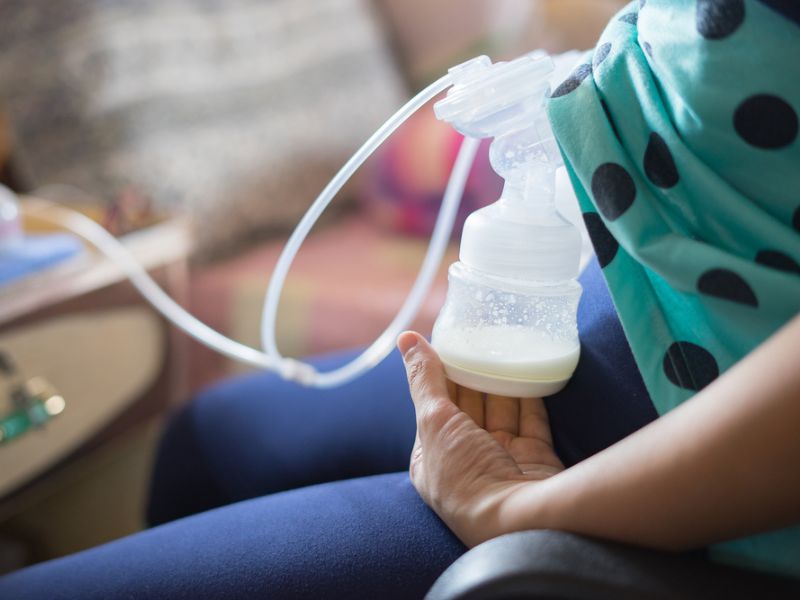Does your pumped breast milk look different from day to day? Don’t worry! You can expect your breast milk to change in color day-to-day and even be tinged with blue, green, or pink colors. What’s the cause? It’s mainly about the food you eat. Certain foods, herbs, medications, and dyes can change the color of your breast milk. In most cases, it’s harmless. Here’s what might be coloring your breast milk.

Image Credit: Shutterstock/Have a nice day Photo
Blue Or Clear
The blueish or clear, watery breast milk you see at the start of a pumping (or nursing) session is usually the foremilk. Foremilk is thinner and lower in fat than the creamier, whiter milk you see later.
Yellow
Several factors can cause yellow breast milk:
- You are just starting to breastfeed. After giving birth, your body makes colostrum, a thick yellow liquid full of nutrients.
- You’re getting enough beta-carotene. Your breast milk may be slightly yellow or orange if you consume vegetables high in this vitamin, such as carrots, squash, and sweet potatoes.
- You have frozen your breast milk. Breast milk can turn yellow after freezing.

Image Credit: Shutterstock/buritora
Green
Green veggies like spinach, seaweed, and kale may give your breast milk a green tint. The green Gatorade (or other food dyes) may play a role, too.
Pink, Red, Or Rust
It could be caused by a few things if your breast milk is pink, red, or rust-tinted:
- You may have consumed natural red or pink foods or drinks, like beets, or artificial red drinks, like orange soda.
- Your breast milk may have blood in it. Don’t worry! It’s mostly from a ruptured capillary or cracked nipples and is not It usually heals in a few days. However, keep an eye out and contact your doctor if there are more than trace amounts of blood or if there’s still bleeding in a few days.